Ethereum’s subsequent main improve known as “Fusaka”, which mixes “Fulu” (consensus) and “OSAKA” (execution), and can change how the community handles information and costs with out altering the core person expertise.
Beneath the floor, it is a assertion of path. Whereas Ethereum’s most important chain stays the hub for remaining funds and information availability, day-to-day actions proceed to stream outward to cheaper and quicker rollups.
The open query of whether or not Fusaka will carry customers again to layer 1 has already been answered. That will not occur. This makes it much more troublesome to maneuver away from Layer 2.
Contained in the fusaka: Scaling the piping, smoothing the run
Fusaka’s technical spine is centered round information availability, sampling, and blob administration. That is Ethereum’s method to creating layer 2 posts cheaper and extra environment friendly. The headline proposal, EIP-7594 (PeerDAS), permits nodes to pattern solely items of rolled-up information known as “blobs” quite than downloading the whole lot.
This frees up greater blob capability and considerably reduces bandwidth prices for validators. This can be a prerequisite for scaling L2 throughput.
Subsequent got here EIP-7892, which launched the “Blob Parameter-Solely” fork (BPO). This can be a mechanism to incrementally enhance the variety of blobs per block (for instance, from 10 to 14, or from 15 to 21) with out rewriting the protocol.
This may permit builders to successfully modify Ethereum’s information capability with out ready for a full improve. EIP-7918 units a ground on the bottom value for blobs, making certain that the public sale value for information area doesn’t drop to close zero when demand is low.
The remainder of the bundle focuses on person expertise and security. EIP-7951 provides help for secp256r1, the cryptographic curve utilized by WebAuthn, permitting passkey logins between Ethereum wallets. EIP-7917 introduces deterministic proposer lookahead. This can be a small however essential change that helps the pre-confirmation system predict who will produce the subsequent block, permitting for quicker transaction ensures.
In the meantime, EIP-7825 limits transaction fuel to stop denial-of-service dangers, and EIP-7935 adjusts default block fuel targets to take care of validator stability.
These upgrades are already dwell on testnets akin to Holesky and Sepolia, with mainnet activation scheduled for early December.
Why fusaka is essential in charges and the roll-up financial system
Fusaka is just not promising cheaper layer 1 fuel to customers. Constructed to decrease Layer 2 expenses. This improve improves the economics of networks like Arbitrum, Optimism, Base, and zkSync by permitting rollups to submit extra information at a decrease price.
Inner modeling means that rollup charges can drop between 15% and 40% beneath regular circumstances, and as much as 60% if the provision of blobs exceeds demand for an prolonged time period. On Ethereum mainnet, fuel costs are more likely to stay roughly flat, though future changes to dam fuel targets might carry them down one other 10-20%.
Nonetheless, updates to passkeys and proposers might change the expertise of utilizing Ethereum. WebAuthn help permits wallets to combine biometric or device-based logins, eliminating the effort of seed phrases and passwords. Predictable proposer schedules allow proactive affirmation, so customers can anticipate near-instant affirmation of routine transactions, particularly rollups.
The tip result’s that Ethereum can be utilized extra easily with out anybody being pulled again to L1. The rails will likely be quicker, however will nonetheless level within the path of the roll-up lane.
L1 is cost, L2 is expertise
Ethereum’s structure is now not a monolithic vs. modular design debate, however modular by selection. The aim of Layer 1 is to function a base for high-security funds and information availability, whereas the precise person exercise is moved to Layer 2.
Fusaka reinforces this division. Growing blob capability permits L2 to deal with greater throughput for video games, social apps, and microtransactions that might be uneconomical on mainnet. Improved login and affirmation workflows make these L2 environments really feel native and rapid, eliminating most of the UX gaps that after favored L1s.
The place would customers select Layer 1? Slender circumstances embody high-value funds, institutional-scale transfers, or conditions the place block order accuracy is essential, akin to miner extractable worth (MEV) administration or DeFi liquidation. Nonetheless, these eventualities are solely a small a part of the general on-chain exercise. For the remainder, L2 stays its pure house.
The Greater Story: Ethereum as a Layered Web
From the highest, Fusaka emphasizes maturity over fuel optimization. This supplies Ethereum with a scalable framework to regulate information capability (BPO) with out disruptive forks and a UX layer that brings Web3 nearer to Web2.
However the philosophy is evident. The community is just not making an attempt to pay attention visitors on the mainnet. Rollup is constructing a freeway system to deal with regional visitors, and L1 will finally function the courthouse the place the whole lot is notarized.
There may be additionally a monetary component to this story. Cheaper information posting might carry a wave of latest low-value functions akin to social, funds, and gaming again into the rollup. Every of those nonetheless consumes ETH by blob charges, and as a result of price ground in EIP-7918, these charges contribute to ETH burn. Regardless of decrease person prices, Ethereum’s burn price might rise additional if exercise grows quicker than charges decline.
On the validator facet, PeerDAS reduces the bandwidth load, however could create new dependencies on “supernodes” that retailer full BLOB information. This can be a decentralization trade-off, and the neighborhood will proceed to debate how one can scale information availability with out narrowing members.
The stability Ethereum strikes right here between throughput, ease of use, and reliability displays the broader path of crypto infrastructure. L1 is hardened as a safe basis, whereas L2 absorbs experimentation and scale.
Take-out
Fusaka is not making an attempt to regain consideration on the Ethereum mainnet. Fairly the other, it is a deliberate transfer to strengthen our basis for a rollup-centric future.
This improve expands information capability, stabilizes costs, and modernizes the pockets expertise, however it’s accomplished to serve the layers above. Ethereum’s L1 will likely be safer and smarter, however customers will proceed to dwell on L2, which is cheaper and quicker than earlier than.
By the point BPO1 and BPO2 roll out early subsequent yr, the true indicators to look at will likely be blob utilization and capability, L2 price compression, and the adoption of passkeys in wallets. The consequence will outline how frictionless Ethereum will develop into in 2026, not by drawing folks again to the primary chain, however by making the exit almost invisible.










